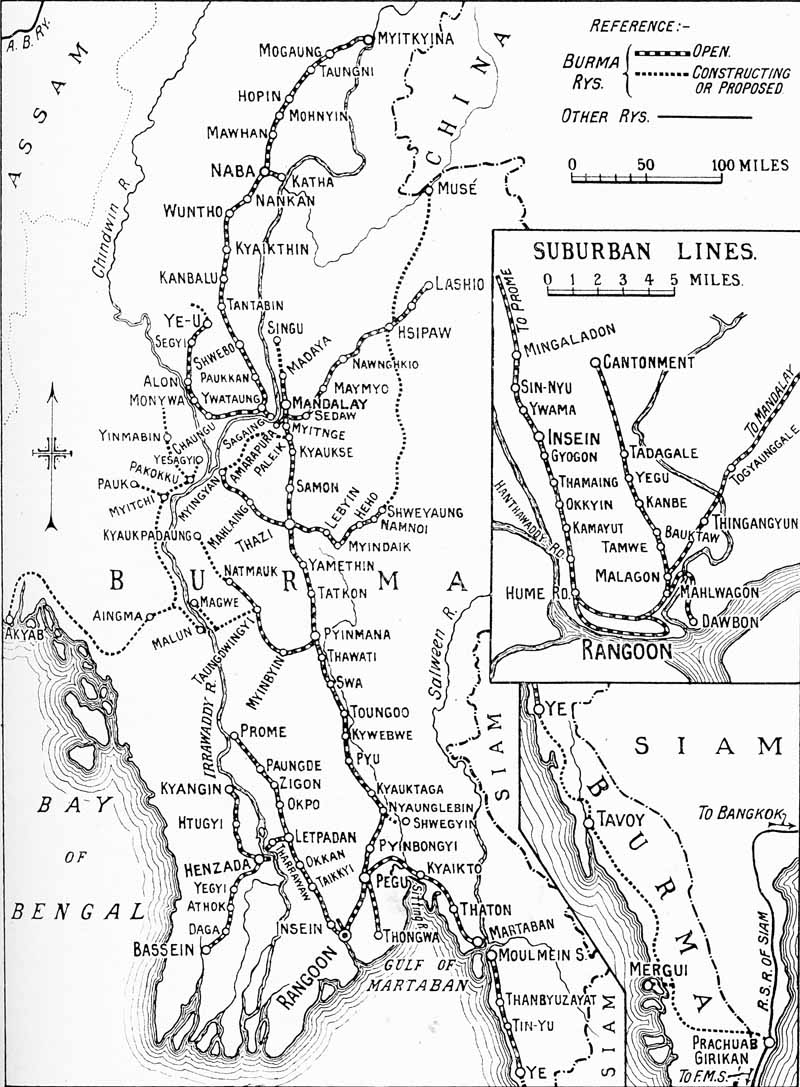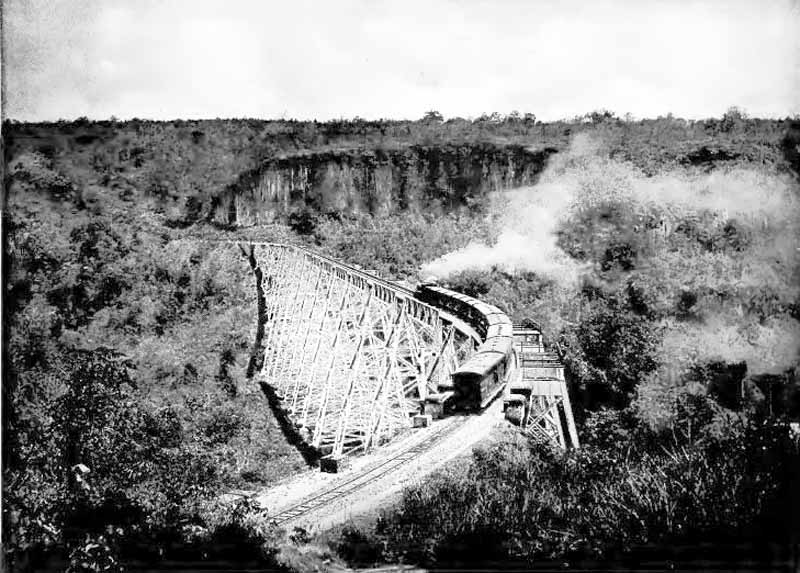The first section of railway in Burma, opened in 1877, was the 163 mile long line from
Rangoon to Prome on the banks of the Irrawaddy, whilst the line from Rangoon to Mandalay was
opened to Toungoo in 1884 and extended to Mandalay, after the annexation of upper Burma,
in 1889. From 1896 to 1929 the system was managed by the London based Burma Railways
Company, thereafter the Indian state took control until 1st April 1937 when Burma was
separated from India. The second World War had a drastic effect on Burma Railways with
less than a third of its locomotive stock in 1940 surviving the war.
The mountainous line to Lashio was opened in 1903 and this included
11 miles at a gradient of 1 in 25 and the Goteik viaduct 2260ft long and 320ft high, one of
the major bridges in the world at the time of its construction.
Another mountainous line was the branch from Thazi Junction to Heho opened in 1916. This also
had gradients as steep as 1 in 25 and reached a height of 4601ft above sea level near
Mayindaik. These mountain lines resulted in the purchase of 2-8-0+0-8-2 Garratts to work
them, 13 being acquired in all between 1924 and 1929. These were later superceded by ex
War Department 2-8-0+0-8-2, 2-8-2+2-8-2 and 4-8-2+2-8-4 Garratts; the latter type only seeing
little more than wartime service before being shipped off to East Africa whilst some of the
smaller types saw use into the 1970s. Although the country has always been Myanmar in the
local language, we have referred to it by the English and still widely used name here.
To view any full size image and caption details please click the maroon button below each thumbnail



